Pneumatic Urban Waste Collection Systems: A Review
Abstract
:Featured Application
Abstract
1. Introduction
2. Bibliometric Analysis
3. Advantages and Disadvantages of AWCSs
4. Market Overview
5. Environmental Aspects
6. Conclusions
Author Contributions
Funding
Institutional Review Board Statement
Informed Consent Statement
Data Availability Statement
Acknowledgments
Conflicts of Interest
References
- Eurostat Waste Statistics. 2022. Available online: https://ec.europa.eu/eurostat/statistics-explained/index.php?title=Waste_statistics (accessed on 1 November 2022).
- Zhang, X.; Liu, C.; Chen, Y.; Zheng, G.; Chen, Y. Source separation, transportation, pretreatment, and valorization of municipal solid waste: A critical review. Environ. Dev. Sustain. 2022, 24, 11471–11513. [Google Scholar] [CrossRef] [PubMed]
- Heidari, R.; Yazdanparast, R.; Jabbarzadeh, A. Sustainable design of a municipal solid waste management system considering waste separators: A real-world application. Sustain. Cities Soc. 2019, 47, 101457. [Google Scholar] [CrossRef]
- Shah, A.V.; Srivastava, V.K.; Mohanty, S.S.; Varjani, S. Municipal solid waste as a sustainable resource for energy production: State-of-the-art review. J. Environ. Chem. Eng. 2021, 9, 105717. [Google Scholar] [CrossRef]
- Ebrahimian, F.; Karimi, K. Efficient biohydrogen and advanced biofuel coproduction from municipal solid waste through a clean process. Bioresour. Technol. 2020, 300, 122656. [Google Scholar] [CrossRef]
- Rodrigues, S.; Martinho, G.; Pires, A. Waste collection systems. Part A: A taxonomy. J. Clean. Prod. 2016, 113, 374–387. [Google Scholar] [CrossRef]
- Yadav, V.; Karmakar, S. Sustainable collection and transportation of municipal solid waste in urban centers. Sustain. Cities Soc. 2020, 53, 101937. [Google Scholar] [CrossRef]
- Lella, J.; Mandla, V.R.; Zhu, X. Solid waste collection/transport optimization and vegetation land cover estimation using Geographic Information System (GIS): A case study of a proposed smart-city. Sustain. Cities Soc. 2017, 35, 336–349. [Google Scholar] [CrossRef]
- Mohsenizadeh, M.; Tural, M.K.; Kentel, E. Municipal solid waste management with cost minimization and emission control objectives: A case study of Ankara. Sustain. Cities Soc. 2020, 52, 101807. [Google Scholar] [CrossRef]
- Teerioja, N.; Moliis, K.; Kuvaja, E.; Ollikainen, M.; Punkkinen, H.; Merta, E. Pneumatic vs. door-to-door waste collection systems in existing urban areas: A comparison of economic performance. Waste Manag. 2012, 32, 1782–1791. [Google Scholar] [CrossRef]
- Zheng, P.; Zhang, K.; Zhang, S.; Wang, R.; Wang, H. The door-to-door recycling scheme of household solid wastes in urban areas: A case study from Nagoya, Japan. J. Clean. Prod. 2017, 163, S366–S373. [Google Scholar] [CrossRef]
- Cabeza, L.F.; Chàfer, M.; Mata, É. Comparative analysis of web of science and scopus on the energy efficiency and climate impact of buildings. Energies 2020, 13, 409. [Google Scholar] [CrossRef] [Green Version]
- Aria, M.; Cuccurullo, C. bibliometrix: An R-tool for comprehensive science mapping analysis. J. Informetr. 2017, 11, 959–975. [Google Scholar] [CrossRef]
- Beltrami, E.J.; Bodin, L.D. Networks and vehicle routing for municipal waste collection. Networks 1974, 4, 65–94. [Google Scholar] [CrossRef]
- Akkad, M.Z.; Rajab, Y.; Bányai, T. Vehicle Routing for Municipal Waste Collection Systems: Analysis, Comparison and Application of Heuristic Methods. In Vehicle and Automotive Engineering; Springer: Cham, Switzerland, 2023; pp. 694–708. [Google Scholar]
- Reed, M.; Yiannakou, A.; Evering, R. An ant colony algorithm for the multi-compartment vehicle routing problem. Appl. Soft Comput. 2014, 15, 169–176. [Google Scholar] [CrossRef] [Green Version]
- Wang, C.; Qin, J.; Qu, C.; Ran, X.; Liu, C.; Chen, B. A smart municipal waste management system based on deep-learning and Internet of Things. Waste Manag. 2021, 135, 20–29. [Google Scholar] [CrossRef]
- Fernandez, C.; Mateu, C.; Bejar, R.; Maña, F. Method for the Removal of Waste from a Network of Waste Inlets. WIPO Patent WO2013174795A1, 28 November 2013. [Google Scholar]
- Farre, J.A.; Fernandez, C.; Mateu, C. Method for the Intelligent Control of Waste Collection in an Automated Waste Collection Plant. Israel Patent IL291423A, 1 October 2022. [Google Scholar]
- Kihlström, C. Vacuum Accumulator Connected to a Suction Tube. European Patent EP0906877B1, 2 February 2004. [Google Scholar]
- Hyden, H.O. Device for Discharge of Pneumatically Transported Goods. German Patent 1973. [Google Scholar]
- Kergaravat, O.; Trebesses, G.; Whitwham, M. International Benchmark Study and Cost Analysis of Automated Vacuum Waste Collection Projects—Synthesis; La Librairie ADEME: Paris, France, 2017. [Google Scholar]
- Garcia-Herrero, I.; Oliveira-Leao, S.; Margallo, M.; Laso, J.; Bala, A.; Fullana, P.; Raugei, M.; Irabien, A.; Aldaco, R. Life cycle energy assessment of pneumatic waste collection static systems: A case study of energy balance for decision-making process. Chem. Eng. Trans. 2018, 70, 1699–1704. [Google Scholar] [CrossRef]
- Fernández, C.; Manyà, F.; Mateu, C.; Sole-Mauri, F. Approximate dynamic programming for automated vacuum waste collection systems. Environ. Model. Softw. 2015, 67, 128–137. [Google Scholar] [CrossRef]
- Fernández, C.; Manyà, F.; Mateu, C.; Sole-Mauri, F. Modeling energy consumption in automated vacuum waste collection systems. Environ. Model. Softw. 2014, 56, 63–73. [Google Scholar] [CrossRef]
- Kim, B.-I.; Kim, S.; Sahoo, S. Waste collection vehicle routing problem with time windows. Comput. Oper. Res. 2006, 33, 3624–3642. [Google Scholar] [CrossRef]
- Schiffer, M.; Schneider, M.; Walther, G.; Laporte, G. Vehicle Routing and Location Routing with Intermediate Stops: A Review. Transp. Sci. 2019, 53, 319–343. [Google Scholar] [CrossRef]
- Ombuki-Berman, B.M.; Runka, A.; Hanshar, F.T. Waste collection vehicle routing problem with time windows using multi-objective genetic algorithms. In Proceedings of the 3rd IASTED International Conference on Computational Intelligence, Banff, AB, Canada, 2–4 July 2007; ACTA Press: Calgary, Canada; pp. 91–97. [Google Scholar]
- Solomon, M.M. Algorithms for the Vehicle Routing and Scheduling Problems with Time Window Constraints. Oper. Res. 1987, 35, 254–265. [Google Scholar] [CrossRef] [Green Version]
- Rylenius, J.; Brandefelt, N. Automated Next-Hop Algorithm for a Multi-Branch Refuse Collection System. WO200409 4270A1, 2003.
- Farré, J.A.; Salgado-Pizarro, R.; Martín, M.; Zsembinszki, G.; Gasia, J.; Cabeza, L.F.; Barreneche, C.; Fernández, A.I. Case study of pipeline failure analysis from two automated vacuum collection system. Waste Manag. 2021, 126, 643–651. [Google Scholar] [CrossRef]
- Tario, J.; Ancar, R.; Kamga, C.; Miller, B.; Spertus, J.; Ross, B.; Eickemeyer, P. A Study of the Feasibility of Pneumatic Transport of Municipal Solid Waste and Recyclables in Manhattan Using Existing Transportation Infrastructure; New York State Energy Research and Development Authority: New York, NY, USA, 2013.
- Miller, B.; Spertus, J.; Kamga, C. Costs and benefits of pneumatic collection in three specific New York City cases. Waste Manag. 2014, 34, 1957–1966. [Google Scholar] [CrossRef]
- Iriarte, A.; Gabarrell, X.; Rieradevall, J. LCA of selective waste collection systems in dense urban areas. Waste Manag. 2009, 29, 903–914. [Google Scholar] [CrossRef]
- Punkkinen, H.; Merta, E.; Teerioja, N.; Moliis, K.; Kuvaja, E. Environmental sustainability comparison of a hypothetical pneumatic waste collection system and a door-to-door system. Waste Manag. 2012, 32, 1775–1781. [Google Scholar] [CrossRef]
- Aranda Usón, A.; Ferreira, G.; Zambrana Vásquez, D.; Zabalza Bribián, I.; Llera Sastresa, E. Environmental-benefit analysis of two urban waste collection systems. Sci. Total Environ. 2013, 463, 72–77. [Google Scholar] [CrossRef]
- Laso, J.; García-Herrero, I.; Margallo, M.; Bala, A.; Fullana-i-Palmer, P.; Irabien, A.; Aldaco, R. LCA-based Comparison of Two Organic Fraction Municipal Solid Waste Collection Systems in Historical Centres in Spain. Energies 2019, 12, 1407. [Google Scholar] [CrossRef] [Green Version]
- Chàfer, M.; Sole-Mauri, F.; Solé, A.; Boer, D.; Cabeza, L.F. Life cycle assessment (LCA) of a pneumatic municipal waste collection system compared to traditional truck collection. Sensitivity study of the influence of the energy source. J. Clean. Prod. 2019, 231, 1122–1135. [Google Scholar] [CrossRef]
- Farré, J.A.; Llantoy, N.; Chàfer, M.; Gómez, G.; Cabeza, L.F. Life Cycle Assessment (LCA) of Two Pneumatic Urban Waste Collection Systems Compared to Traditional Truck Collection in an Airport. Sustainability 2022, 14, 1109. [Google Scholar] [CrossRef]
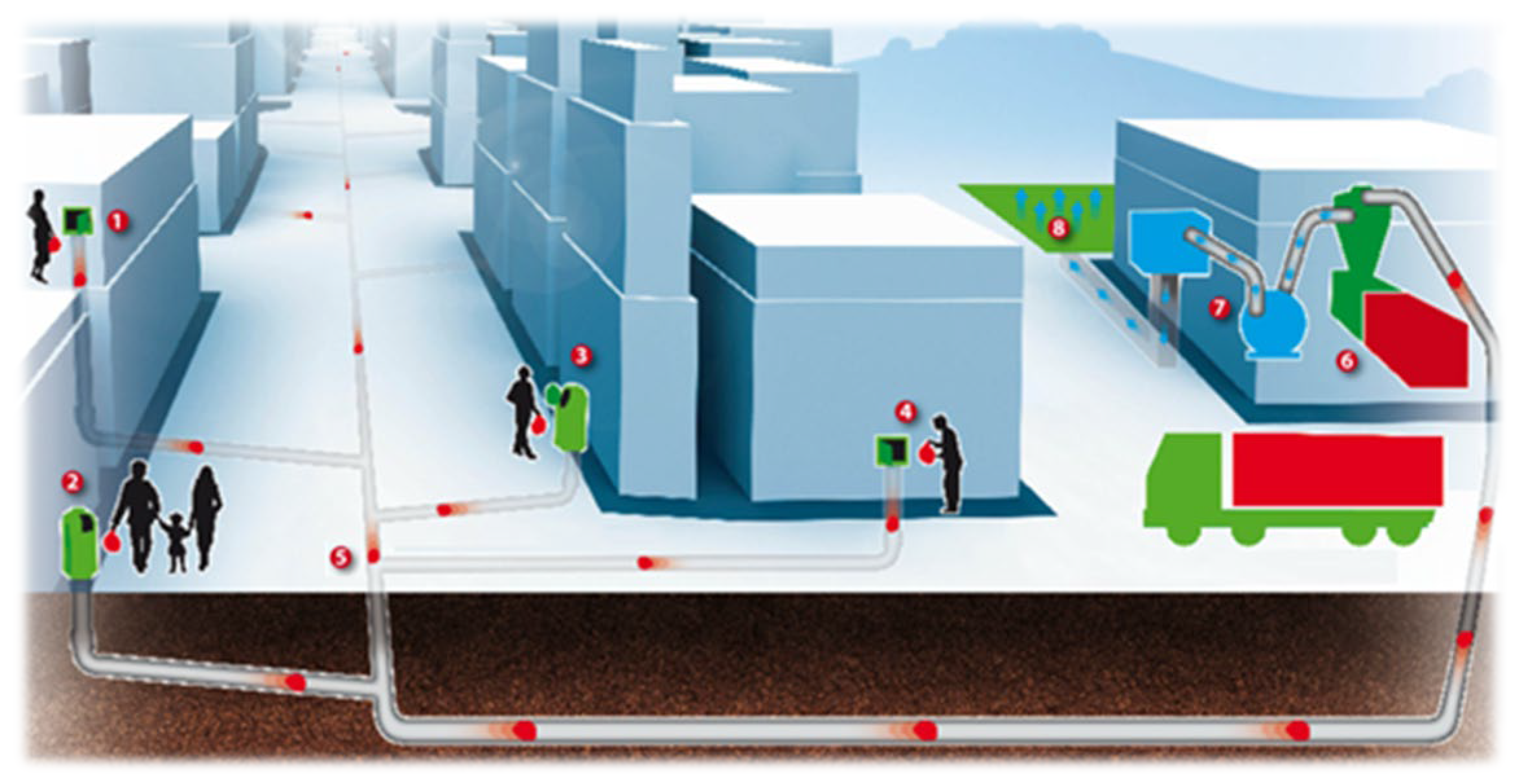
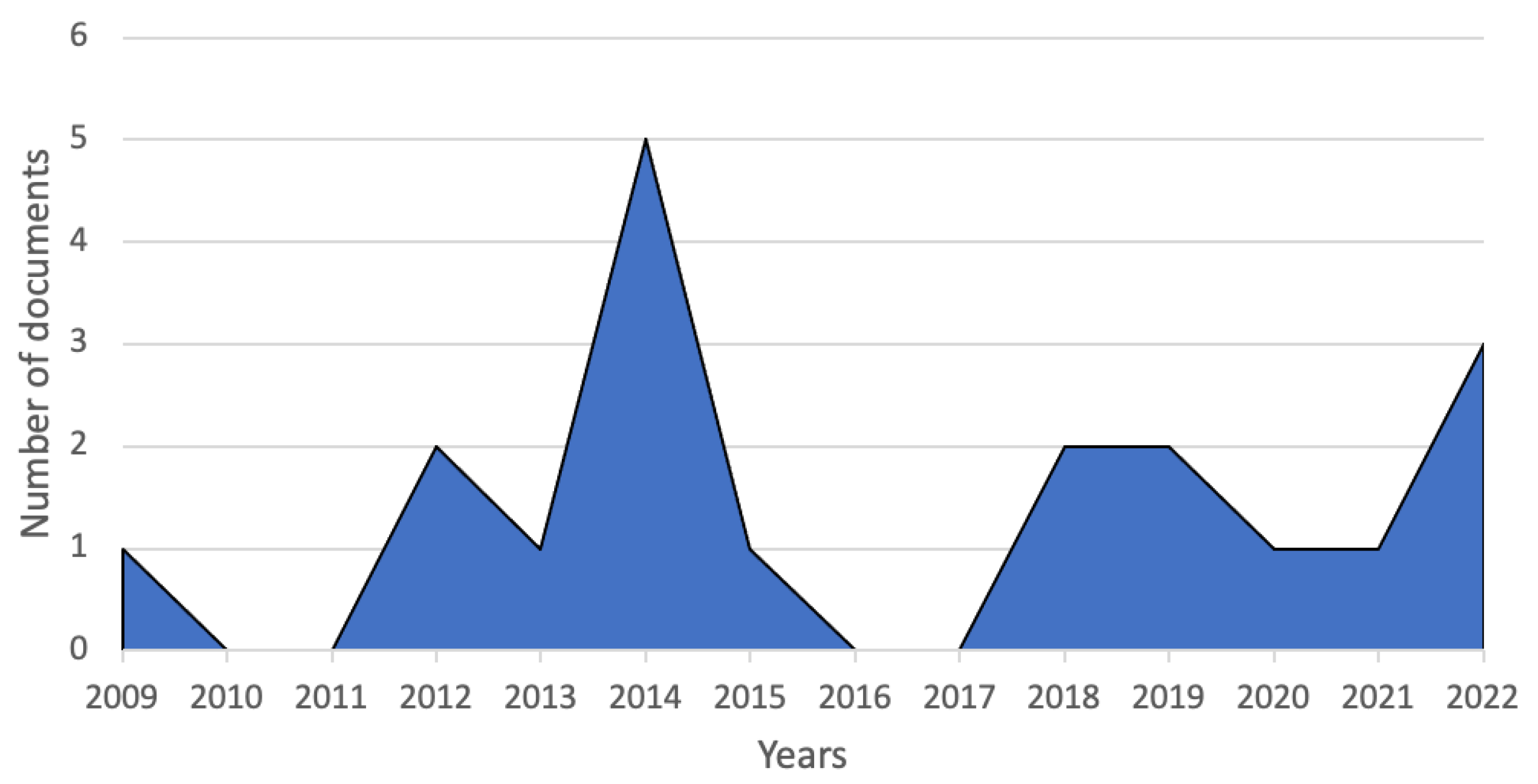


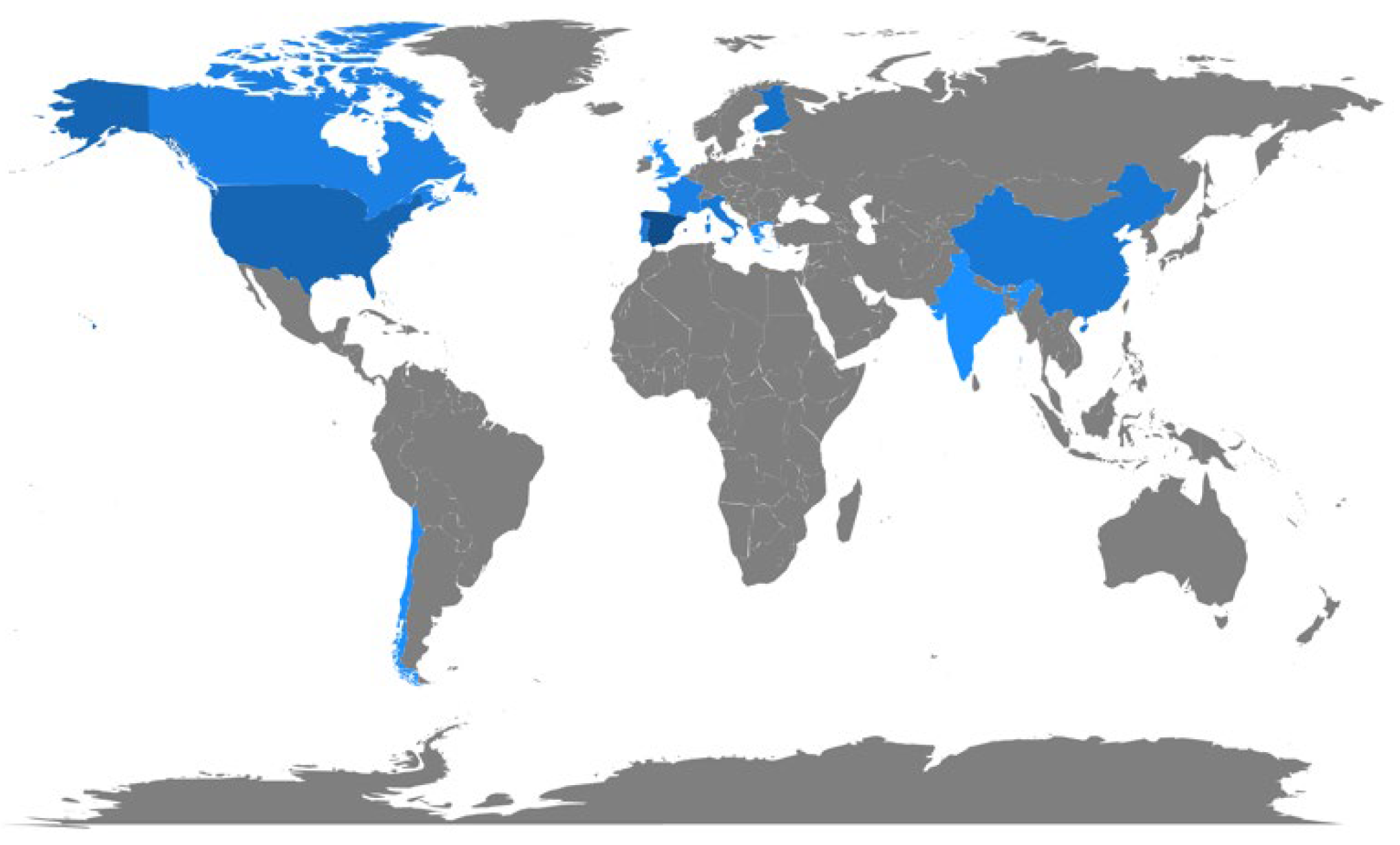
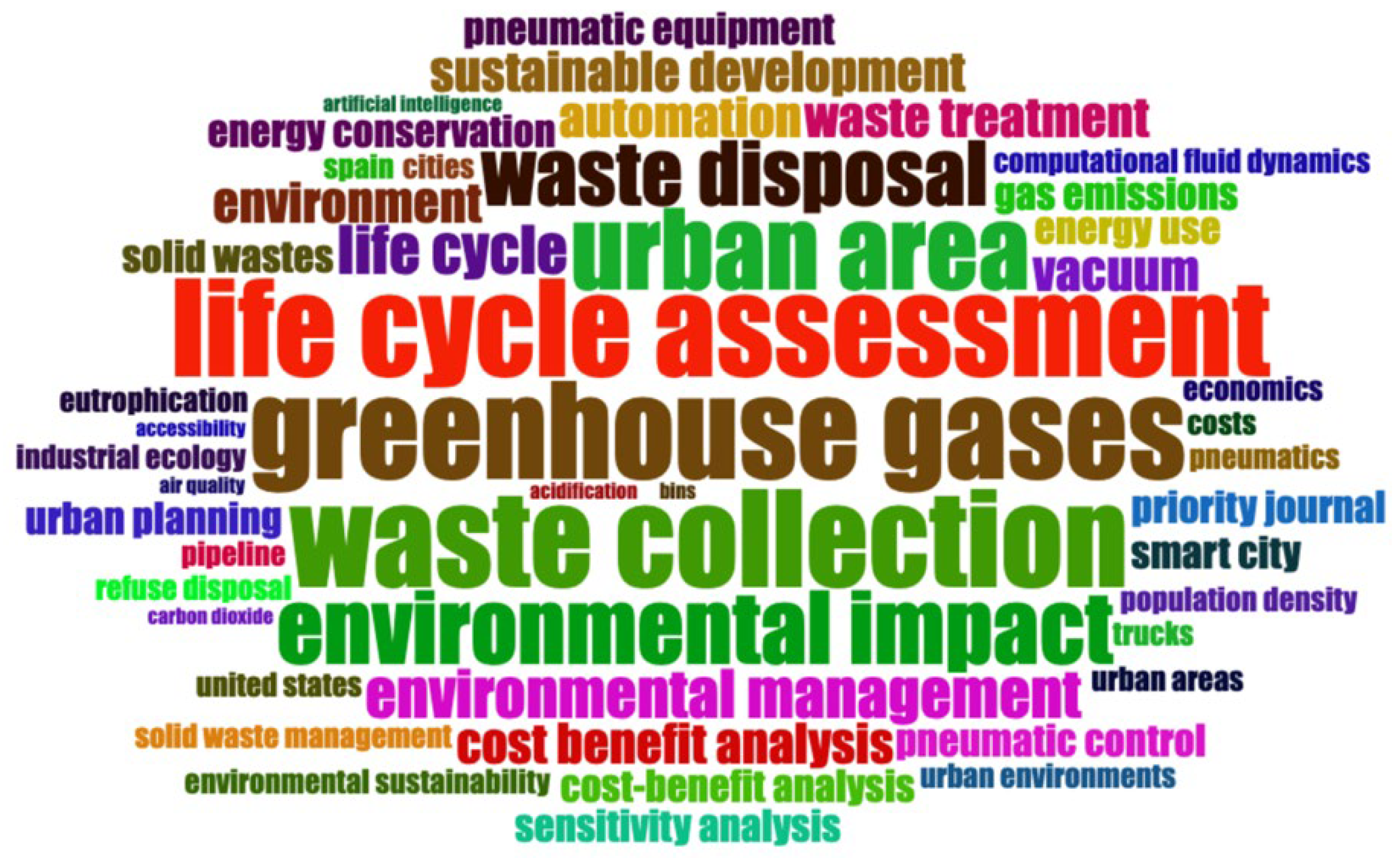
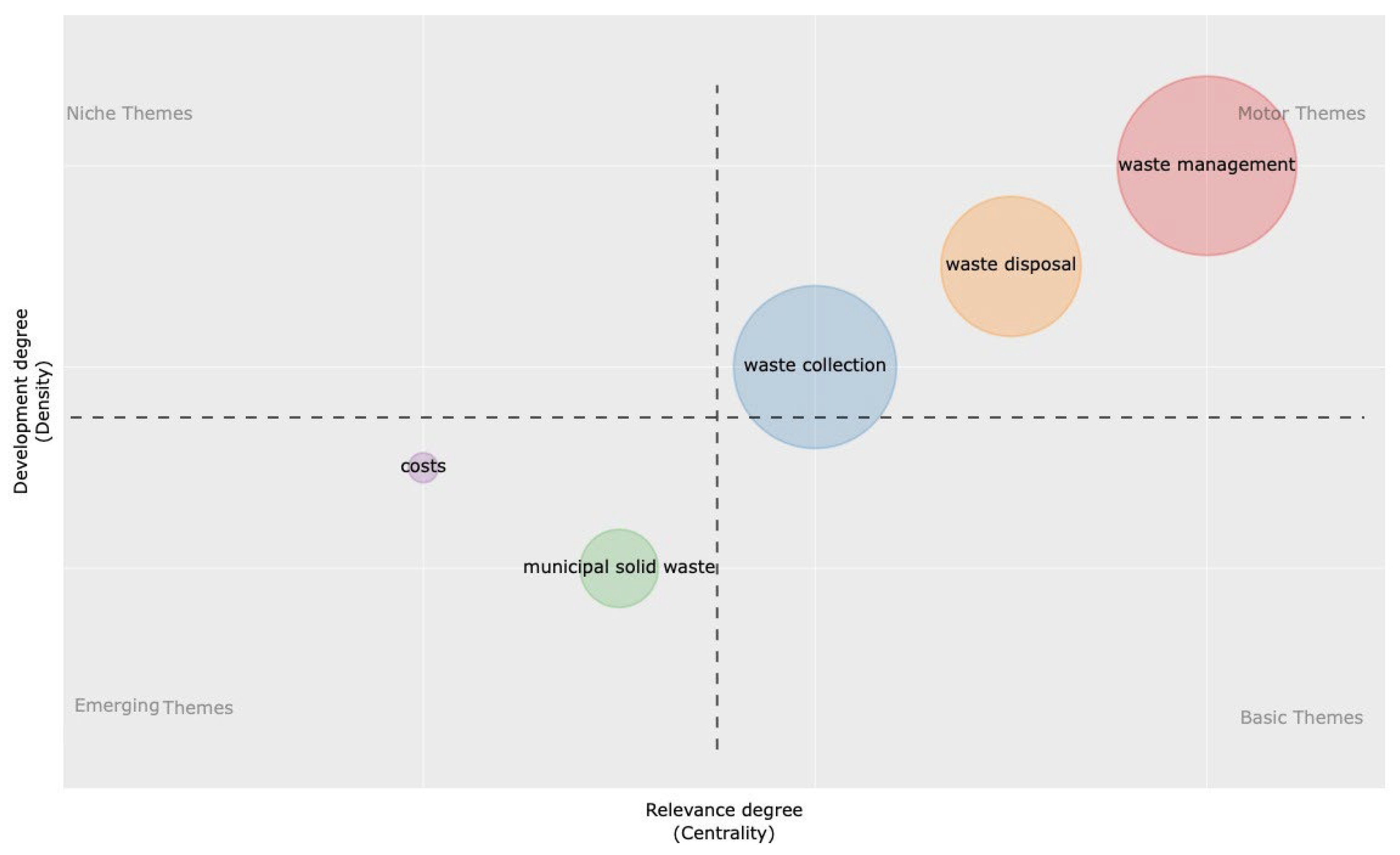
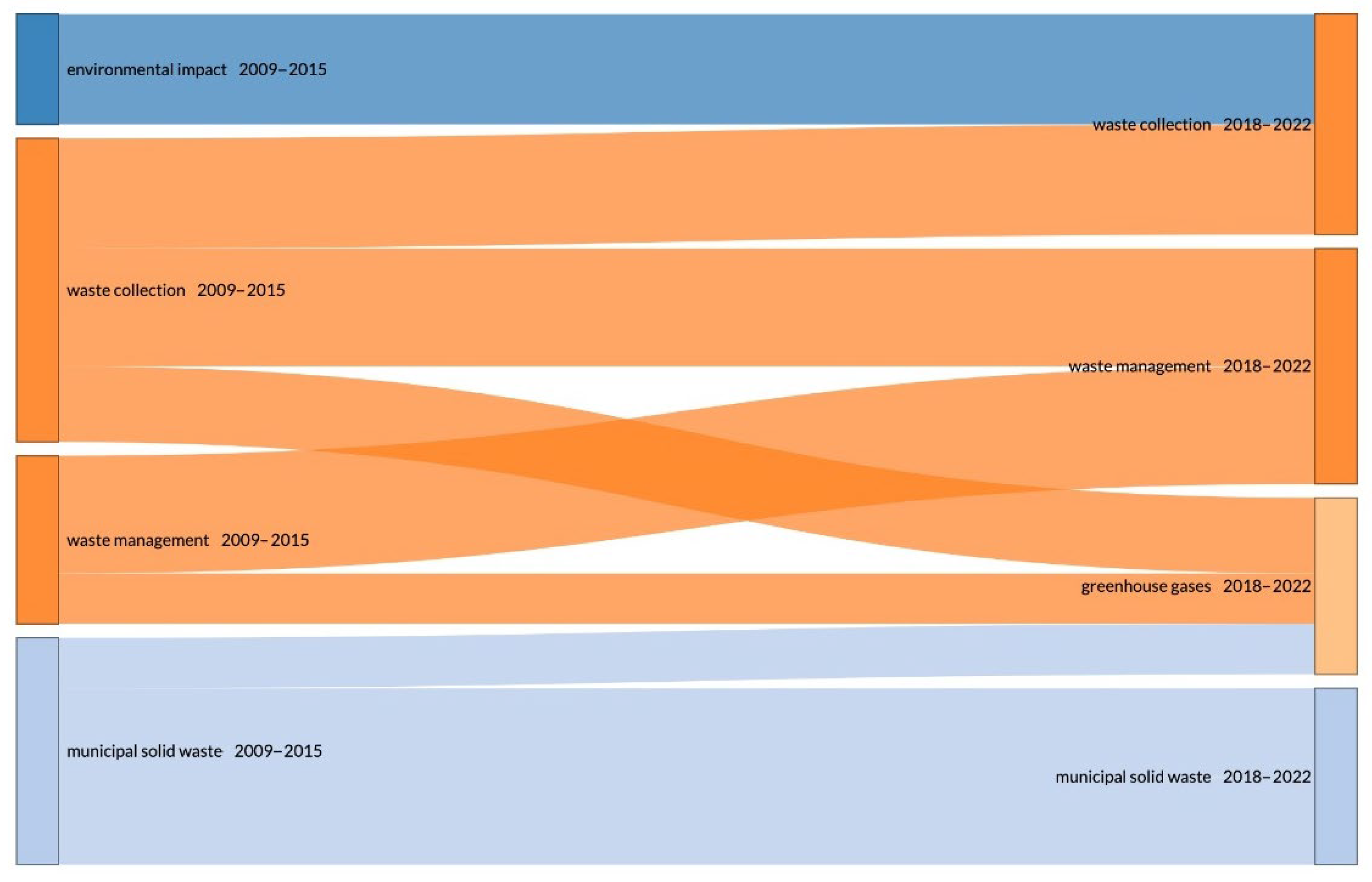
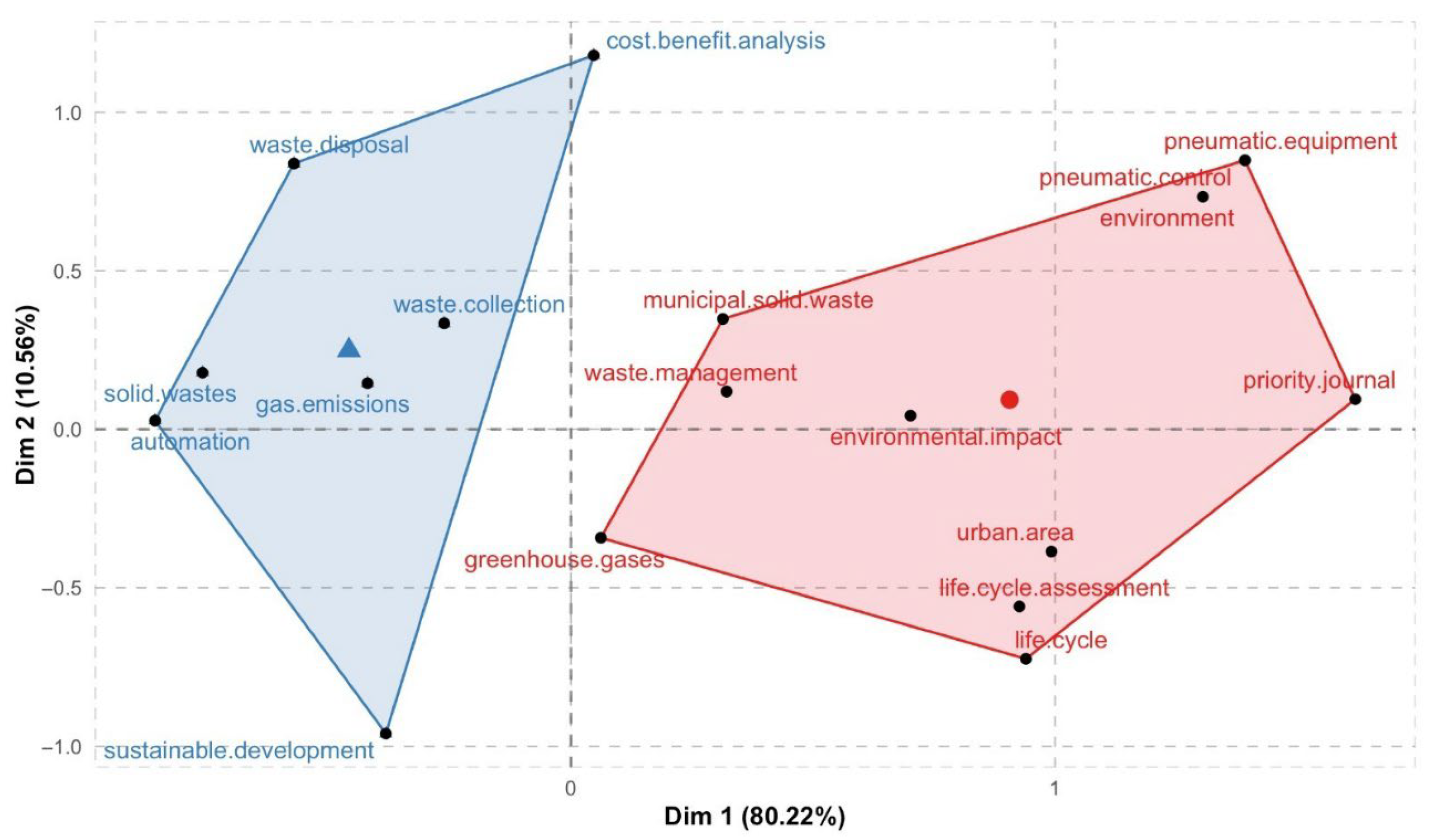
| Start-Up Date | Localisation | Application Area | Connected Dwellings | Connected Inhabitants | Supplier Company | Targeted Capacity (Tonnes/day) | Number of Fractions | Types of Waste Collected |
|---|---|---|---|---|---|---|---|---|
| 1975 | Roosevelt Island, New York, USA | Existing area | 4300 | 14,000 | Envac | 7 | 1 | RHW |
| 2002 | Forum, Barcelona, Spain | New district | 6200 | 16,000 | Ros Roca | 20 | 2 | Food waste, RHW |
| 2004 | Hammarby Sjöstad, Stockholm, Sweden | n.a. | 2095 | n.a. | Sweco | n.a. | 3 | Paper, organics, RHW * |
| 2005 | Buenavista, Portugalete, Spain | Existing area | 7600 | 19,000 | Ros Roca | 22 | 2 | Packaging, RHW |
| 2007 | Sondra Station, Stockholm, Sweden | n.a. | 3240 | n.a. | n.a. | n.a. | n.a. | n.a. |
| 2008 | Wembley Stadium, UK | New district | 2300 | 6400 | Envac | 23 | 3 | RHW, food waste, packaging |
| 2008 | Esperit Sant Hospital, Santa Coloma Gramenet, Spain | New development | n.a. | n.a. | Ros Roca | 2–1 | 3 | RHW, metal, plastic, linen |
| 2008 | Torrijos Market, Madrid, Spain | New development | 18 | 500 | Ros Roca | 3 | 2 | RHW, metal, plastic |
| 2009 | T1 Barcelona Airport, Spain | New development | n.a. | n.a. | Ros Roca | 10 | 4 | RHW, paper, organics, metal, plastic |
| 2011 | Rivas, Portugalete, Spain | Existing area | 2000 | 6500 | Ros Roca | 25 | 2 | Packaging, RHW |
| 2011 | Galdakao, Vizcaya, Spain | Existing area | 6100 | 19,500 | Envac | 25 | 4 | RHW, paper, packaging, food waste |
| 2011 | Est Ensemble Romainville, France | Existing area | 2300 | 5300 | Envac | 12 | 2 | HRW **, RHW |
| 2011 | Pamplona, Spain | Existing area | 4000 | 12,500 | Ros Roca | 12 | 3 | RHW, paper, metal, plastic |
| 2011 | Ḥarām Grand Mosque in Mecca, Saudi Arabia | Existing area | n.a. | 2 million (visitors/day) | MariMatic | 600 | 1 | RHW |
| 2011 | King Abdullah Financial District, Riyahd, Saudi Arabia | New area | n.a. | n.a. | Envac | 145 | 2 | RHW |
| 2012 | Lusail City Marina District, Qatar | New area | 21,000 | 55,000 | Envac | 60 | 2 | RHW, metal, plastic |
| 2012 | 22@, Barcelona, Spain | New district | 14,000 | 14,000 | Ros Roca | 14 | 2 | Food waste, RHW |
| 2012 | Helsinki, Finland | Existing area | n.a. | 5091 | n.a. | 5.5 | 4 | RHW, organics, paper, carton |
| 2012 | Salburua Vitoria, Spain | New district | 6200 | 16,000 | Ros Roca | 20 | 2 | RHW, metal, plastic |
| 2012 | Tianjin Eco-City, China | New area | 110,000 | 350,000 | Envac | 87 | 2 | RHW, food waste |
| 2012 | Alicante Airport, Spain | New development | n.a. | n.a. | Ros Roca | 5 | 4 | RHW, paper, organics, metal, plastic |
| 2013 | Rambam Medical Center, Haifa, Israel | New area | n.a. | n.a. | TransVac (Atreo) | 3 | 2 | RHW, linen |
| 2013 | Stockholm Royal Seaport, Sweden | New district | 1700 | 3500 | Envac | n.a. | 4 | RHW, paper, plastic, street bins |
| 2013 | Amaroussio, Athenes, Greece | n.a. | n.a. | 6500 | n.a. | 16 | 2 | Recyclables, non-recyclables |
| 2013 | Trondheim kommune, Norway | Existing area | 8000 | 2500 | Logiwaste | 6 | 2 | RHW, paper |
| 2013 | Eurosky Tower, Roma, Italy | New development | n.a. | n.a. | Oppent | 1 | 1 | Wastepaper |
| 2014 | Clichy Batignolles, France | New district | 1100 | 2500 | Envac | 20 | 2 | HRW, RHW |
| 2014 | Vallingby Parkstad, Sweden | New district | 1400 | 3000 | MariMatic | n.a. | 3 | Paper, food waste, RHW |
| 2014 | High Line Park, New York, USA | Existing area | n.a. | n.a. | n.a. | 10.8 | 3 | Paper, carton, organics, RHW |
| 2014 | Second Avenue Subway, New York, USA | Existing area | n.a. | nan | n.a. | 19.8 | 3 | Paper, carton, metal, glass, plastic, RHW |
| 2014 | Hamad International Airport, Qatar | New area | n.a. | 5 millions passengers/year | Envac | 40 | 1 | RHW |
| 2017 | Tampere, Finland | New area | 1100 | 3500 | MariMatic | 5 | 3 | RHW, food waste, HRW |
| 2017 | Beijing Beitou Tong, China | Mixed area | 9000 | 26,000 | Envac | 23 | 2 | RHW, food waste |
| 2015 | Bergen, Norway | Existing area | 4000 | 8000 | Envac | 7 | 4 | RHW, paper, cardboard, metal, plastic |
| 2016 | Tiller Ost, Norway | Existing area | 9000 | 2500 | Logiwaste | 10 | 2 | RHW, paper |
| 2016 | Saint Ouen, Paris, France | Existing area | 6200 | 18,000 | Ros Roca | 15 | 3 | RHW, paper, metal, plastic |
| 2017 | Vitry Sur Siene, Paris, France | Existing area | 9100 | 30,000 | Ros Roca | 25 | 2 | RHW, metal, plastic |
| 2017 | Grow-Smarter Project, Stockholm, Sweden | Existing area | 350 | 450 | Envac | 0.5 | 1 | RHW |
| 2018 | Östermalmshallen food market, Sweden | Existing area | n.a. | n.a. | Logiwaste | 2 | 1 | RHW |
| 2019 | Maroochydore Sunshine Coast, Australia | New area | 5000 | 12,000 | Envac | 9 | 2 | RHW, metal, plastic |
| 2019 | Skandia Fastigheter, Sundbyberg, Sweden | Existing area | 9000 | 450 | Logiwaste | 8 | 2 | RHW, food waste |
| 2022 | Shaheed Park, Kuwait | New area | n.a. | n.a. | URD | 3 | 1 | RHW |
| 2022 | Sluisbuurt Neighbourhood, Amsterdam, Netherlands | New area | 5500 | 13,500 | MariMatic | 15 | 4 | RHW, paper, food waste, metal, glass, plastic |
| 2022 | Ramat Hasharon, Tel Aviv, Israel | New development | 3650 | 15,500 | URD | 14 | 2 | Metal, plastic, food waste |
Disclaimer/Publisher’s Note: The statements, opinions and data contained in all publications are solely those of the individual author(s) and contributor(s) and not of MDPI and/or the editor(s). MDPI and/or the editor(s) disclaim responsibility for any injury to people or property resulting from any ideas, methods, instructions or products referred to in the content. |
© 2023 by the authors. Licensee MDPI, Basel, Switzerland. This article is an open access article distributed under the terms and conditions of the Creative Commons Attribution (CC BY) license (https://creativecommons.org/licenses/by/4.0/).
Share and Cite
Farré, J.A.; Mateu, C.; Teixidó, M.; Cabeza, L.F. Pneumatic Urban Waste Collection Systems: A Review. Appl. Sci. 2023, 13, 877. https://doi.org/10.3390/app13020877
Farré JA, Mateu C, Teixidó M, Cabeza LF. Pneumatic Urban Waste Collection Systems: A Review. Applied Sciences. 2023; 13(2):877. https://doi.org/10.3390/app13020877
Chicago/Turabian StyleFarré, Josep Anton, Carles Mateu, Mercè Teixidó, and Luisa F. Cabeza. 2023. "Pneumatic Urban Waste Collection Systems: A Review" Applied Sciences 13, no. 2: 877. https://doi.org/10.3390/app13020877
APA StyleFarré, J. A., Mateu, C., Teixidó, M., & Cabeza, L. F. (2023). Pneumatic Urban Waste Collection Systems: A Review. Applied Sciences, 13(2), 877. https://doi.org/10.3390/app13020877






